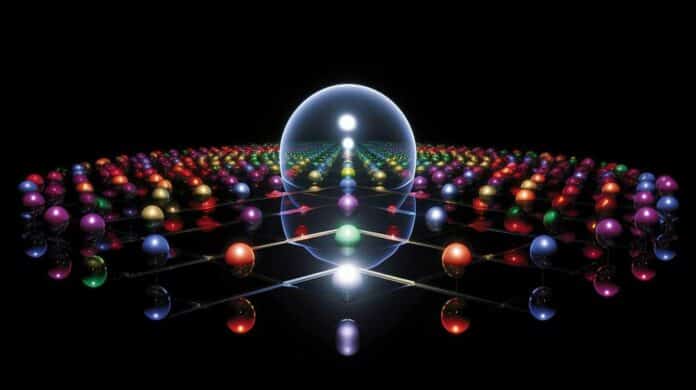
By Pranjal Mehar, 17 May 2024
Collected at : https://www.techexplorist.com/finding-quantum-order-chaos/83841
The ability of particles to preserve phase relationships and exist in numerous states simultaneously—a phenomenon analogous to all sections of a wave being synchronized—has long been the subject of scientific inquiry. Whether quantum coherence may endure through a chemical reaction where bonds dynamically break and form has been an open subject.
Harvard scientists have now shown for the first time that quantum coherence can survive in an ultracold chemical reaction. These results demonstrate how chemical reactions can be used for quantum information science applications in the future.
Senior co-author Kang-Kuen Ni, Theodore William Richards, Professor of Chemistry and Physics, said, “I am extremely proud of our work investigating a fundamental property of a chemical reaction where we really didn’t know the result. It was gratifying to experiment and find out what Mother Nature tells us.”
This study describes how scientists looked at a particular atom-exchange chemical reaction employing 40K87Rb bialkali molecules in a frigid environment. In this reaction, two potassium-rubidium (KRb) molecules react to create potassium (K2) and rubidium (Rb2) products.
By adjusting magnetic fields, the group created the first nuclear spins in KRb molecules in an entangled state. They then used specialized instruments to analyze the results. The Ni Lab was able to monitor the complex quantum dynamics underpinning the reaction process and result and track the nuclear spin degrees of freedom in the frigid environment.
Using laser cooling and magnetic trapping, scientists cooled their molecules to just a fraction of a degree above Absolute Zero. Scientists can precisely isolate, alter, and identify specific quantum states because molecules slow slowly in this frigid environment—just 500 nanoKelvin. This control makes it easier to see quantum phenomena like coherence, entanglement, and superposition, which are essential to understanding how molecules behave and chemical processes occur.
The scientists could map and describe the reaction products precisely using advanced techniques, such as coincidence detection, allowing them to identify precise pairs of reaction products from individual reaction events.
They previously noticed a chaotic energy distribution between the product molecules’ translational and rotational motions. Consequently, it is unexpected to discover quantum order in the form of coherence in the nuclear spin degree of freedom while maintaining the same underlying reaction dynamics.
The outcomes showed that the nuclear spin degree of freedom maintained quantum coherence during the process. The fact that coherence persisted suggested that the reactant’s entanglement had been passed down to the product molecules, K2 and Rb2. Furthermore, scientists showed control over the distribution of the reaction products by purposefully causing decoherence in the reactants.
Senior co-author Kang-Kuen Ni, Theodore William Richards Professor of Chemistry and Physics, said, “Scientists hope to rigorously prove that the product molecules were entangled, and she is optimistic that quantum coherence can persist in non-ultracold environments.”
“We believe the result is general and not necessarily limited to low temperatures and could happen in more warm and wet conditions. That means there is a mechanism for chemical reactions that we didn’t know before.”
First co-author and graduate student Lingbang Zhu sees the experiment as an opportunity to expand people’s general understanding of chemical reactions.
“We are probing phenomena that are possibly occurring in nature,” Zhu said. “We can try to broaden our concept to other chemical reactions. Although the electronic structure of KRb might be different, the idea of interference in reactions could also be generalized to other chemical systems.”
Journal Reference:
- Liu, X., Zhu, L., Luke, J., Arfor Houwman, J. J., Babin, M. C., Hu, G., & Ni, K. (2024). Quantum interference in atom-exchange reactions. Science. DOI: 10.1126/science.adl6570

Leave a Reply